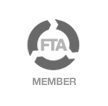From prep work, ground levelling and compacting, to the construction of roads and foundations, heavy ride-on rollers are used for a whole host of construction tasks. However, because they aren’t necessarily required on a regular basis, companies will often choose to hire one rather than purchasing one.
In this blog we examine the 6 key considerations if you’re looking to hire a roller for a construction project:
1. Cost
It’s more than likely that your budget will be a major factor in your choice of roller hire. In addition to evaluating the cost of hiring a roller and acquiring several quotes to ensure you get the best value for money, you may also wish to consider whether the cost of hiring a roller will be more cost-effective than purchasing one.
Give consideration to just how often the roller will be in use. This will give you the opportunity to weigh up whether hiring in a roller or buying one is the better option.
2. Licences
It’s important to ensure there is an appropriate person on hand to operate the roller.
While anyone over the age of 17 is able to hire and operate a roller, they need a full category B car licence with provisional entitlement for category G to drive road rollers. You may also want the reassurance that they have relevant training in operating a ride-on roller safely.
3. Size
The size of the area being worked on and the access to it are important factors. It’s this detail which will enable you to make the right decision on the appropriate size of roller for your needs.
You may also wish to consider whether there will be any obstructions in the way and how you are going to tackle these. The type of job which the roller is being hired for will also help dictate which one you should choose. Some rollers are needed for higher compaction performance than others, for example (in this case a heavier roller would be preferable).
4. Insurance
Once you know the type of roller that you require for your job, ask yourself whether everything is in place to enable the safe use of the roller once it is in your possession. Check that you have the correct insurance, for example.
Hired-in plant insurance is often a good idea, as some construction site insurance policies do not cover hired-in plant equipment. Liability insurance is also recommended in the event that someone is injured and claims are filed.
5. Maintenance
Proper maintenance will minimise the chances of damage and improve safety. It will also help you to stay compliant with our Loss and Damage Waiver Agreement.
Daily visual and operational checks should be carried out on the roller before it is used, this will reduce the chances of dangerous incidents occurring.
6. Health & Safety
It’s vital that a health and safety assessment is carried out and a safety plan completed regarding your roller hire.
Ride on rollers, in particular, come with their own associated safety risks, such as the risk of rollover injuries and fatalities. Be prepared in advance to avoid such incidents from occurring.
GET MORE INFORMATION
You can find out more about the sort of jobs which the different sizes of roller are perfect for in our handy Guide To Roller Hire or by visiting our roller hire page. Then, if you need any further information, always feel free to get in touch with a member of the Rabbit Plant Hire team.
We can also carry out a FREE SITE CHECK and advise you on which is the best option for your requirements, should you need support.
To find out more about Rabbit Plant Hire’s services contact our expert and friendly team on 01903 851957 or email info@rabbitanddowling.co.uk.





